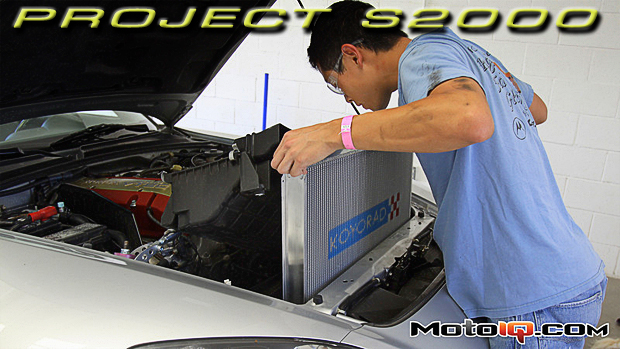,

The MFD2 can read the factory O2 sensor and displays it as an A/F ratio. If the car is equipped stock with a wideband, than it’ll read exactly what the ECU sees. Otherwise, it gives an approximated A/F value. With a narrow band, it’ll read stoich accurately, but rich or lean values are probably not as accurate. With that being said, we got a rich value of 12.0 at WOT and that corresponds to what we’ve seen S2000s run stock based on dyno tests.
If you want a wide band readout the MFD2 is also compatible with AEM and Innovate sensor controllers and any sensor with a 0-5 volt output.
At the track, we hit some not-very-comforting coolant temperatures (103C) in not-that-hot ambient temperatures (85F). Because the S2000 uses a coolant-oil heat exchanger for an oil cooler, keeping the coolant temps down will help keep the oil temps down a little bit; ~3C from what we’ve researched as the oil cooler is really small!
 |
 |
| The Koyo is like an NFL defensive lineman and the stocker is like the place kicker from your high school freshman team. The Koyo measures in over three times thicker! |

To bring the coolant temps down, we swapped out the stock radiator for a Koyo unit. Yup, we swapped it while at Buttonwillow. To keep the number of variables down, we put back in the coolant we drained (and that we had changed just before the track day). For coolant, it is important to use one that is silicate-free. The OEM Honda blue stuff is silicate-free to prevent corrosion of the aluminum engine block. We used Peak Long Life Antifreeze and Coolant which is also silicate free. To minimize the variability of cooling effectiveness due to coolant:water ratio, we had pre-mixed coolant and water in the same ratio to add as the Koyo has a significantly larger fluid capacity.





